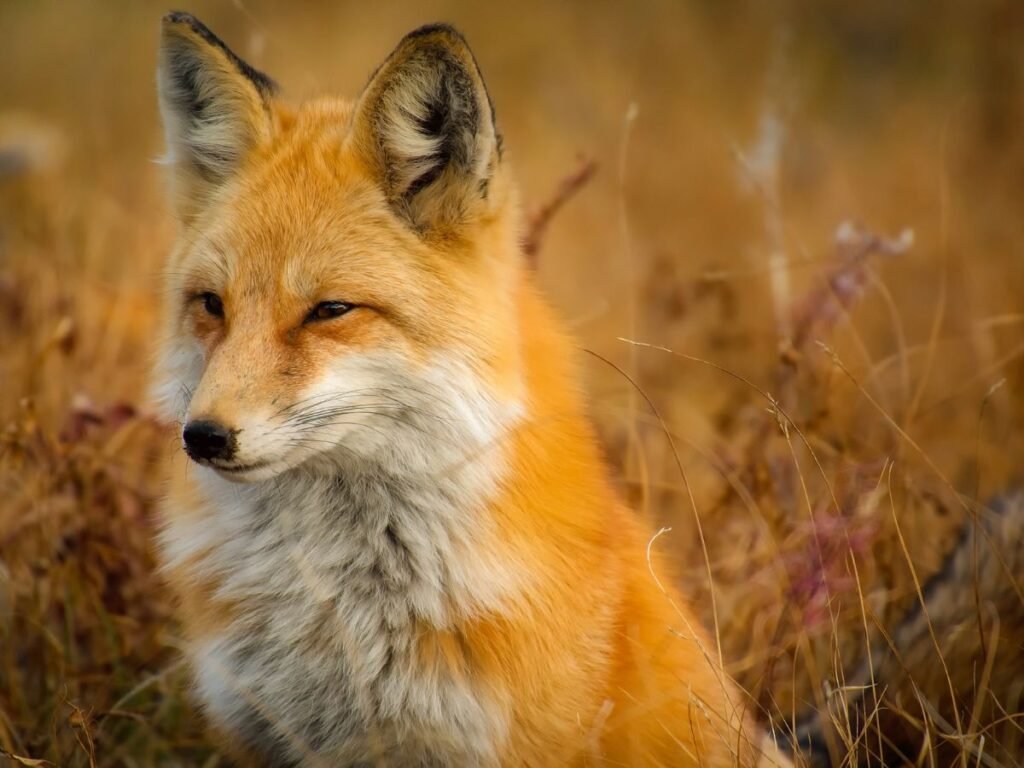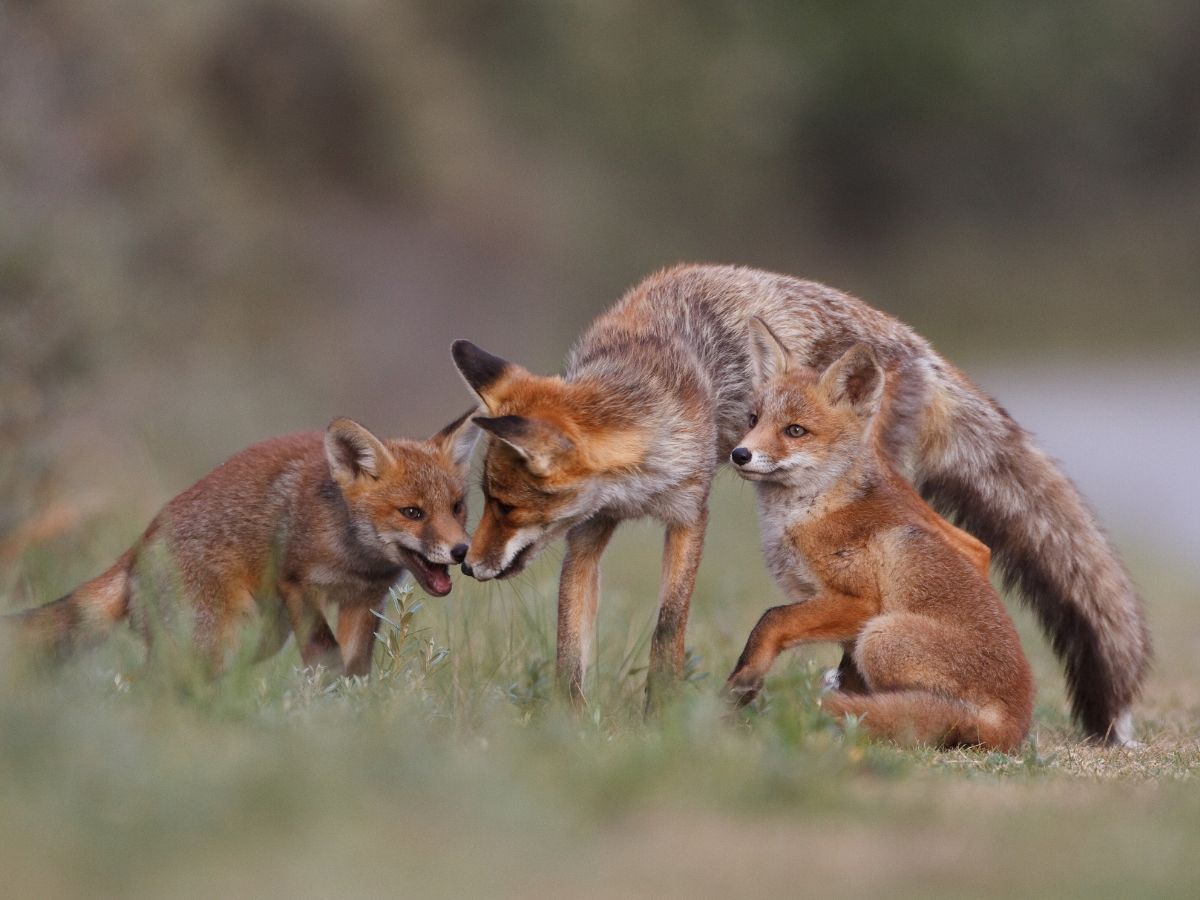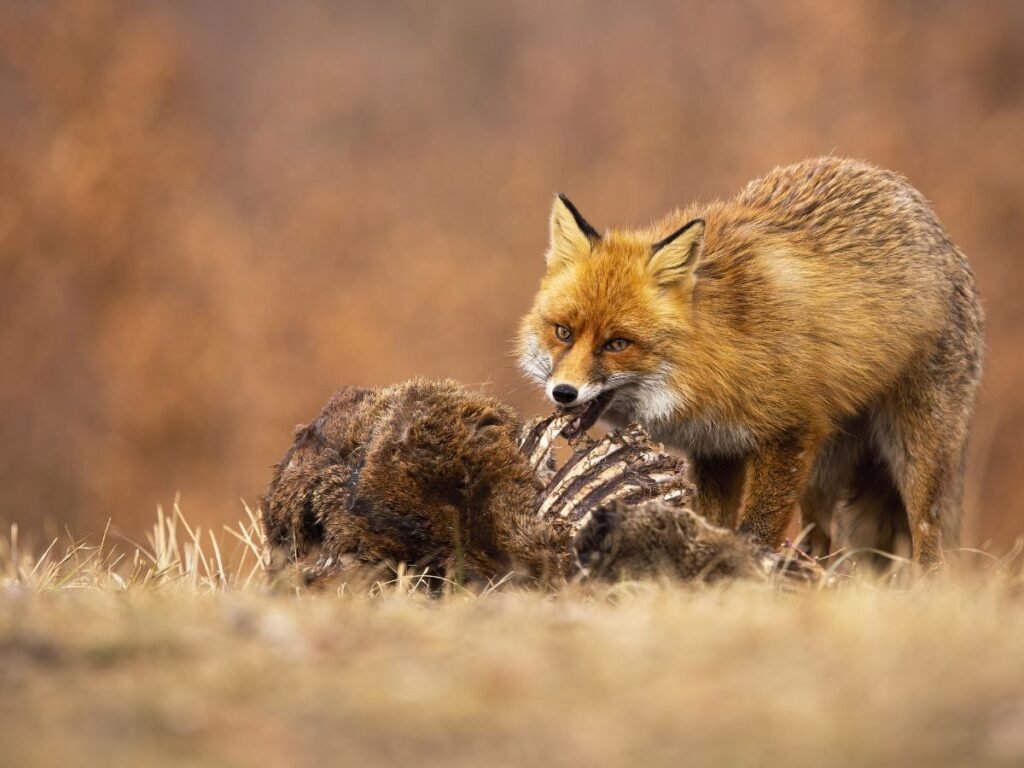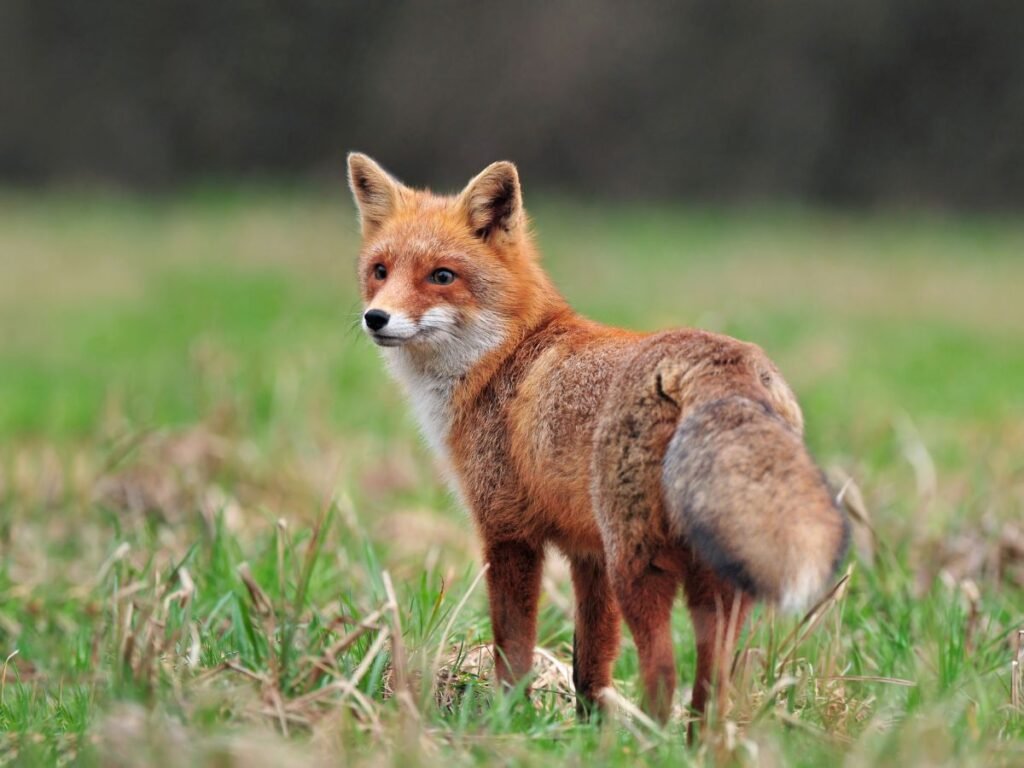Red foxes are an iconic species found across much of the Northern Hemisphere, from North America to Europe and Asia. Over time, these adaptable creatures have evolved a range of adaptations that enable them to thrive in various environments. These adaptations can be grouped into three categories: structural, behavioral, and physiological.
Structural adaptations refer to the physical characteristics of red foxes that enable them to survive and thrive in their environment. Some of the structural adaptations of red foxes include their dense fur, sharp claws, and keen senses. The dense fur of red foxes helps to insulate them from the cold, while their sharp claws enable them to climb trees and dig dens. Their keen senses, including excellent vision and hearing, allow them to locate prey and avoid predators.

Behavioral adaptations refer to how red foxes modify their behavior to survive and thrive in their environment. These adaptations include social behavior, hunting strategies, and communication. Red foxes are social animals and live in family groups, which enables them to cooperate in hunting and raising their young. They are also opportunistic hunters, and their hunting strategies vary depending on the availability of prey. Red foxes communicate with each other through a range of vocalizations and body language.
Physiological adaptations refer to how red foxes have adapted their internal systems to cope with environmental challenges. These adaptations include their high metabolism, specialized digestive system, unique kidneys, reproductive system, and immune system. Red foxes have a high metabolism, which enables them to maintain their body temperature and energy levels in cold environments. They also have a digestive system adapted to process various foods, including both animal and plant material. Red foxes have specialized kidneys that allow them to conserve water in dry environments, and a reproductive system that is adapted for producing and raising offspring in a range of different environments. Finally, red foxes have a robust immune system that is adapted to fight off a range of diseases and infections.
In this article, we are going to discuss each of them in detail one by one.
Adaptations Of A Red Fox
Behavioral Adaptations Of A Red Fox
Red foxes are highly adaptable animals that have evolved a range of behavioral adaptations to help them survive in a variety of different environments. These adaptations allow red foxes to successfully hunt, mate, raise their young, and defend their territory. Red foxes are known for their agility, speed, and intelligence, and have successfully colonized many different habitats around the world, from urban areas to remote wilderness regions. Understanding the behavioral adaptations of red foxes is important for gaining insights into their ecological roles and for developing effective conservation strategies to protect this iconic species.
Hunting behavior:
Red foxes are skilled predators that can adapt their hunting behavior to a wide range of prey. They use a combination of stalking, pouncing, and running to catch their prey, and are known for their agility and speed. Red foxes have excellent senses of hearing and smell, which they use to locate prey, and they can also leap several feet into the air to catch birds or insects. They are also known to cache, or store, extra food for later consumption.
Social behavior:
Red foxes are highly social animals that live in family groups known as packs. Within these packs, individuals engage in a range of social behaviors, including grooming, playing, and communicating through various vocalizations, body language, and scent marking. The social bonds within a pack are strong, with individuals often relying on each other for protection, hunting, and child-rearing. The hierarchical structure of the pack ensures that each individual has a specific role within the group.
Reproductive behavior:
Red foxes have developed a range of reproductive adaptations that help them successfully mate and raise their young. They engage in complex courtship behaviors, including vocalizations and scent marking, to attract a mate. After mating, the female builds a den in which to give birth and raise her young. She will lactate for several weeks, providing her young with the necessary nutrients for survival. Red foxes have a short gestation period, and females can produce litters of up to 12 pups, ensuring the survival of the species.
Denning behavior:
Red foxes are known for their ability to create and maintain elaborate dens in which they can rest, hide from predators, and raise their young. These dens can range from simple burrows to complex networks of tunnels and chambers. Red foxes will often use abandoned dens created by other animals or will dig their own. They are skilled at camouflaging their dens and will use multiple entrances and exits to avoid detection by predators.
Nocturnal behavior:
Red foxes are primarily nocturnal animals, meaning they are most active at night. This behavior allows them to avoid predators, hunt more effectively, and conserve energy during the hot daytime hours. They can see well in low light conditions and have excellent senses of smell and hearing, which they use to locate prey.
Vocalization behavior:
Red foxes are known for their wide range of vocalizations, including barks, yelps, screams, and whines. These vocalizations are used for communication between pack members, as well as for territorial marking and warning off potential predators. Red foxes also use body language and scent marking to communicate and can convey a range of emotions and intentions through their vocalizations.
Foraging behavior:
Red foxes have adapted to a variety of different environments and food sources, and are known for their opportunistic foraging behavior. They will eat everything from small rodents to fruit and berries, depending on what is available in their local environment. Red foxes are also known to scavenge or feed on the remains of other animals that have been killed by predators or have died from other causes.
Territorial behavior:
Red foxes are highly territorial animals that use scent marking and aggressive displays to defend their territory against other foxes and potential predators. This behavior helps to ensure that they have access to sufficient food, water, and shelter. The size of a red fox’s territory can vary depending on factors such as food availability and population density and can range from a few acres to several square miles.
Structural Adaptations Of A Red Fox
Red foxes have evolved a variety of structural adaptations that allow them to navigate and thrive in their environment successfully. These adaptations include physical features such as fur coats, body shape and size, teeth and jaws, eyesight and hearing, and paws and claws. Each of these adaptations plays a crucial role in the red fox’s ability to hunt, defend territory, and evade predators. Understanding these adaptations is essential for gaining insight into the ecological niche of the red fox and for developing effective conservation strategies to protect this iconic species. The structural adaptations of the red fox have helped it to become one of the most adaptable and widely distributed mammals in the world, found in a wide variety of habitats, from urban areas to remote wilderness regions. Here, we will explore some of the key structural adaptations of red foxes and how they help these animals thrive in the wild.
Teeth and jaws:
Red foxes have a set of sharp, pointed teeth and powerful jaws that are adapted for biting and tearing flesh. Their canines are particularly long and sharp, allowing them to deliver a quick, lethal bite to their prey. They also have a set of flat molars at the back of their jaw that are adapted for crushing bones and grinding tough plant material.
Body shape and size:
Red foxes have a slender, agile body shape that allows them to move quickly and efficiently through their environment. They have relatively long legs and a long, bushy tail that helps them to maintain balance while running and jumping. They are also relatively small, weighing between 6 and 15 pounds, which allows them to maneuver through tight spaces and evade predators.
Eyesight and hearing:
Red foxes have excellent eyesight and hearing, which they use to locate prey and avoid predators. Their eyes are positioned on the front of their head, providing them with binocular vision and depth perception. They also have a range of adaptations that allow them to see well in low light conditions, such as a reflective layer in the back of their eyes and a high density of rod cells. Their ears are large and sensitive, allowing them to detect even the faintest sounds of prey or predators.
Paws and claws:
Red foxes have four strong, flexible paws with five toes each. Their paws are covered in fur to provide insulation and grip, and their toes are equipped with sharp, retractable claws that help them to climb, dig, and grasp prey. Their hind feet are particularly powerful, allowing them to leap up to six feet in the air to catch birds or insects.
Fur coat:
The fur coat of a red fox is a highly specialized adaptation that helps them to survive in cold climates. It consists of two layers: a dense, insulating undercoat that traps warm air close to the body, and longer, coarser guard hairs that protect against wind, snow, and rain. The fur coat also changes color with the seasons, from reddish-brown in summer to grayish-brown in winter, providing camouflage in different environments.
Physiological Adaptations Of A Red Fox
The physiological adaptations of red foxes are an essential component of their survival and success as a species. These adaptations are fine-tuned to the environmental conditions of their habitats, enabling them to thrive in a variety of environments, from cold and dry to hot and humid. Red foxes have a range of physiological adaptations, including high metabolism, a specialized digestive system, unique kidneys, a reproductive system adapted for producing and raising offspring, and a robust immune system. These adaptations enable red foxes to obtain and process food efficiently, conserve water, reproduce successfully, and protect themselves from disease and infection. Understanding the physiological adaptations of red foxes is essential for understanding their ecological niche and for developing effective conservation strategies to protect this iconic species.
Metabolism:
Red foxes have a high metabolic rate, which allows them to maintain their body temperature and energy levels in cold environments. This adaptation is essential for survival in their native habitat, where temperatures can drop well below freezing. Red foxes can metabolize food quickly, which allows them to hunt and eat frequently. They are also able to survive for long periods without food by slowing down their metabolic rate.
Digestive system:
Red foxes have a digestive system that is adapted to process a variety of foods, including both animal and plant material. They have a relatively short digestive tract, which allows them to process food quickly and efficiently. This adaptation is essential for their omnivorous diet, which includes insects, rodents, birds, and fruits. Red foxes can extract nutrients from a wide range of food sources, which allows them to survive in a variety of environments.
Kidneys:
Red foxes have specialized kidneys that allow them to conserve water in dry environments. They can concentrate their urine to conserve water and can survive for long periods without drinking. This adaptation is essential for survival in arid environments, where water is scarce. Red foxes can extract as much water as possible from their food and conserve it in their bodies, allowing them to survive in environments where other animals may not.
Reproductive system:
Red foxes have a reproductive system that is adapted for producing and raising offspring in a range of different environments. They can breed throughout the year, allowing them to take advantage of seasonal food sources. Female red foxes can also have large litters of up to 13 pups, which allows them to produce a large number of offspring in a short amount of time. This adaptation is essential for survival in environments where resources may be scarce and competition for mates and food is high.
Immune system:
Red foxes have a robust immune system that is adapted to fight off a range of diseases and infections. They are particularly resistant to rabies and can carry the virus without showing symptoms. This adaptation is essential for survival in environments where disease and infection may be common. Red foxes can survive in close proximity to humans and other animals without succumbing to disease, which allows them to thrive in a wide range of environments.
In summary, the red fox is a remarkable animal with a range of adaptations that enable it to thrive in diverse environments. Their structural adaptations, such as dense fur, sharp claws, and keen senses, help them to survive in challenging conditions. Behavioral adaptations, such as social behavior, hunting strategies, and communication, enable them to cooperate in hunting and raise their young successfully. Finally, physiological adaptations, including a high metabolism, specialized digestive system, unique kidneys, reproductive system, and immune system, allow them to cope with environmental challenges such as cold, dry, or humid conditions.














Leave a Reply